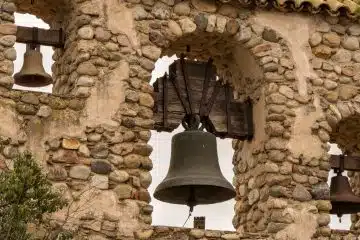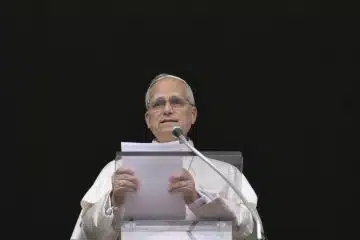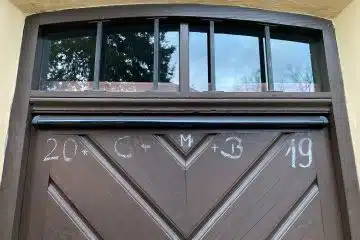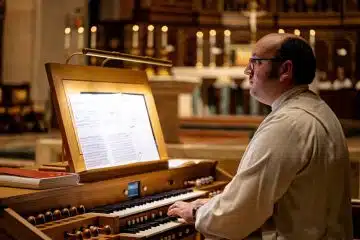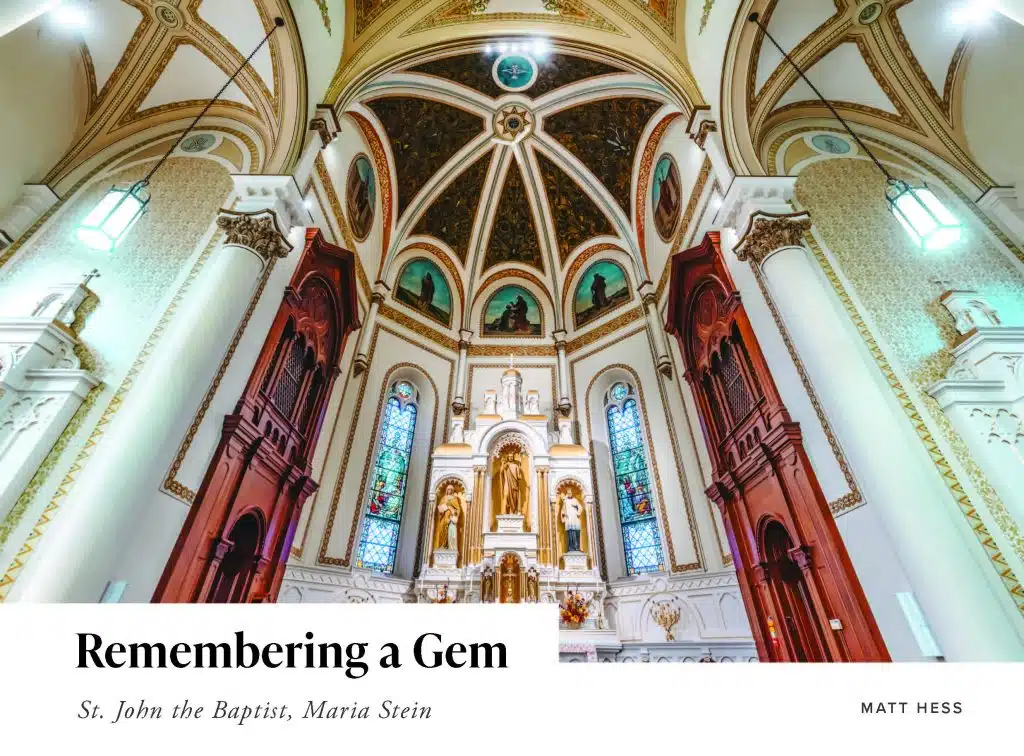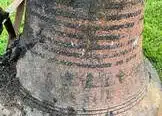Remembering a Gem
 On May 29, residents of Maria Stein watched flames tear through their town’s centerpiece. We are encouraged to hear that many of its treasures were salvaged, able to inspire the faithful for years to come. One of the jewels in the region’s crown known as the Land of the Cross-Tipped Churches, St. John the Baptist Church is the oldest Catholic church in Mercer County. As we pray for the community and offer our help, we reflect on the history and beauty of this unique place.
On May 29, residents of Maria Stein watched flames tear through their town’s centerpiece. We are encouraged to hear that many of its treasures were salvaged, able to inspire the faithful for years to come. One of the jewels in the region’s crown known as the Land of the Cross-Tipped Churches, St. John the Baptist Church is the oldest Catholic church in Mercer County. As we pray for the community and offer our help, we reflect on the history and beauty of this unique place.
Around the mid-1830s, the twenty-five German Catholic families who settled in the area founded a parish. The priest stationed at Stallowstown (now Minster) celebrated the first Mass in 1836, and the first log church was finished the next year. By the mid to late 1840s, the German-speaking Missionaries of the Precious Blood took charge of the parish.
Construction of a larger and more permanent church building began in 1849, and it was consecrated in the fall of 1850.
As the community grew and the church became too small, the parish voted in 1887 to build a new worship space. Contractors for many of the local parishes, the DeCurtians family carried out the plans drawn up by nationally- renowned church architect Adolphus Druiding and built the new church, which was dedicated in the fall of 1891 and cost around $40,000.
The church’s nave rises 50 feet high. Its ten Corinthian columns, fashioned with “imposter blocks” on top to give the impression of more height, are unusual in the Land of the Cross-Tipped Churches.
The 1913 altars with eight-sided gold domes were carved for an eastern look, unlike the gothic altars common in German Catholic Churches of this period. The central figure of the high altar was St. John the Baptist, the church’s namesake, and he was flanked by St. Ann and St. Aloysius Gonzaga, with Mary and Joseph in the side altars.
Rich wood frames and glass windows above the sacristy doors helped separate the screened side rooms above the sacristy, from which the semi-cloistered Sisters attended Mass and sang with the male choir, who were in the loft.
Stained-glass windows in the church’s nave portray scenes from the Bible and saints’ lives. Created in Cincinnati, they predate those found in the sanctuary, and many are laced with the German language common when this church was built.
Created by artist Theodore von Freskoirt, the paintings in the sanctuary contain three figures: Sts. John the Evangelist, Peter, and Paul. Round murals depict Sts. Gregory and Augustine (two of the first four doctors of the church), and Precious Blood Father Paulinus Trost created the three framed, canvas pieces in the back of the church, featuring Sts. Francis of Assisi, Francis Xavier, and Dominic Guzman.
Major improvements were made during the 1930’s. In 1935, a new pipe organ was installed, as well as the Stations of the Cross (wooden frames were added in 2011 to harken back to the original). The sanctuary’s stained-glass windows that were blown out during a storm were replaced with ones created in St. Louis that depict the Crucifixion and Resurrection. In 1936-7, Herman Diedam (a German immigrant who settled in Kentland, IN) repainted St. John Church, and much of his stencil work has been retained by the parish over successive restorations. The church began using electricity in 1939.
In 1940, much of the decorative stonework and masonry was removed from the building; retaining the warm red brick that was quintessential of the Cross-Tipped Churches and simplifying the exterior.
By 1973, the pastor and a parishioner committee led a major renovation. A Detroit company wanted to remove and paint over many furnishings that predecessors of the parish had worked hard for, but the committee successfully pushed to save St. John’s beautiful interior.
In 2011, the parish celebrated 175 years, received many gifts, and completed many projects. A decade later, the people of St. John united to repaint the church. More recently, the stained- glass windows were fixed with new storm windows.
St. John’s nearly 190-year history is a testament to the community’s faith and is as precious and beautiful as the church so severely damaged. It is also evidence of the parish community’s strength. Their past generosity and teamwork brought them through difficult times and witnessed to the goodness of God and hope as they move forward.
This article appeared in the July 2025 edition of The Catholic Telegraph Magazine. For your complimentary subscription, click here



